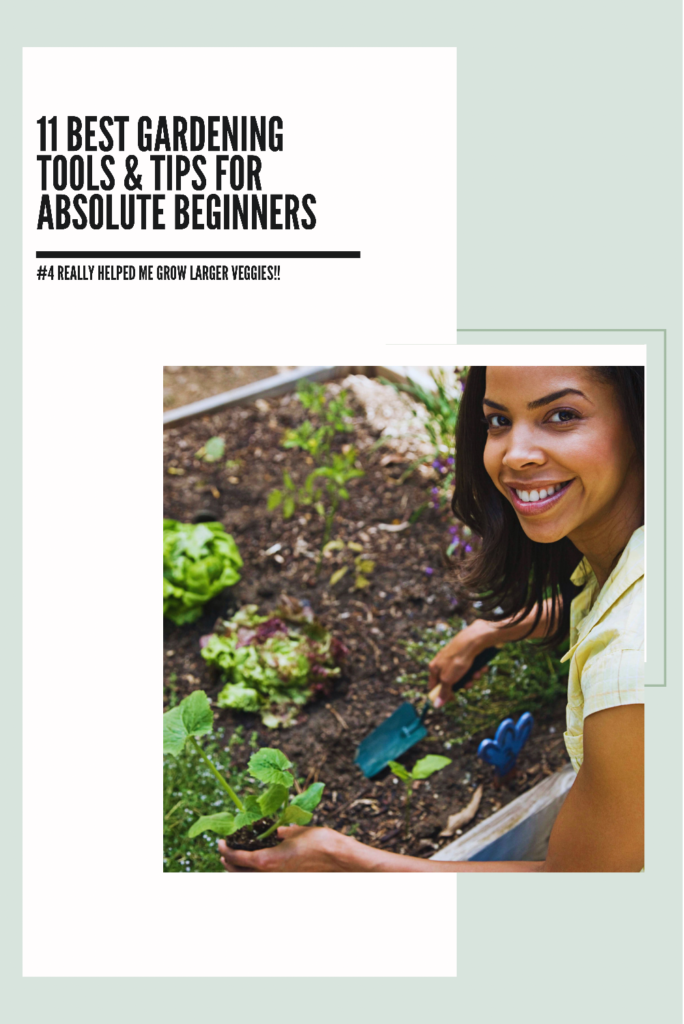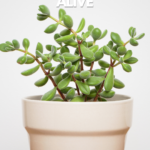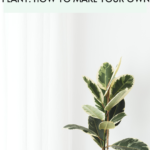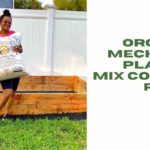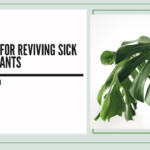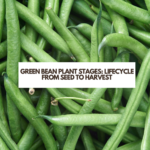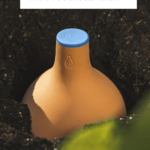Starting a vegetable garden may seem like a scary venture. It is absolutely an art to be respected. However, gardening is something anyone can learn. And the best part is, you can eat the literal fruits of your labor.
I started my small vegetable garden last year. We knew we were going to be home a lot of the time, and it seemed perfect. I do have a small space compared to others, but it worked. Like many new gardeners, I started by watching videos on YouTube.
It was great hearing from experienced gardeners. However, the best way to start learning about gardening is just to start.
I started a small garden with anything I had on hand. It was a little rocky at first, but it worked out so well I’m doing it again this year.
While I’m not the most experienced gardener, I have learned a tremendous amount. Sharing what I’ve learned has helped other start their own garden. That makes it all worth it.
FTC DISCLOSURE: Some of the links in this post are affiliate links. If you click on them and make a purchase, I will receive a small finder’s fee on the sale. This does not increase your price in any way shape or form. Using these links help support the continuation of this website. All opinions are my own. Thank you in advance.
Here are 11 of the Best Gardening Tools & Tips For Absolute Beginners:
1.Choose Your Garden Space
As novice gardeners, it’s easy to feel overwhelmed reading garden websites. Many of the garden writers out there have larger spaces for wide beds. This makes it easier to grow lots of food at one time.
It might not be their intention, but expert gardeners can unintentionally confuse and intimidate some. But, don’t be scared. They are a valuable resource, but their advise needs tweaking for those with less space and are new.
My first days of vegetable gardening were filled with me using reusable grocery bags to grow in. Yes, REUSABLE GROCERY BAGS! I used this instead of designated planting containers. I’ve shared about this technique in the video below.
This technique can be used in urban areas as part of urban gardening practices. This is a great way to re-use excess bags. These may have otherwise ended up in landfills.
Planting containers that can be used in smaller spaces include portable raised beds on wheels or without. There’s even vertical gardening towers. I actually have a few vertical gardens on my Pinterest board for inspiration. There are even fabric pots that can be used to grow vegetables in small or larger spaces.
#2 Choose Your Gardening Method
Before I started growing my own food, I purchased foods grown using organic methods. Organic gardening primarily refers to the type of pest control used. While some organic foods actually do have pesticides on them, they are generally less toxic than conventionally grown produce.
Growing my own food garden would allow me to drastically reduce the use of any pesticides. Rather, I would be able to choose what I wanted to use if anything at all.
Growing using organic gardening methods did lead to me losing some plants to hungry bugs, birds, and squirrels. But, I was ok with that. Having affordable organic food was my focus.
#3 Learn Your Area’s Growing Season (First & Last Frost Dates)
When I started researching gardening and garden planning, I quickly learned about frost dates. The concept was a bit confusing at first, but I met someone that explained it in a very simple way.
What Are Frost Dates?
Your frost date generally refers to when it gets too cold to reliably plant vegetables in your area.
The first frost date is the estimated first date the soil or area will be freezing. The last frost date is the estimated date the soil or area generally experiences frost or freezing temps.
Thankfully, we don’t have to guess what these dates are. The Old Farmer’s Almanac has a tool to give you your area specific frost dates.
After narrowing down those dates, you have a general idea of your growing season. Unfortunately, I am not in an area that’s suitable to let me be a year-round vegetable gardener. But by choosing the right plants, you can absolutely have a great gardening season.
#4 Choose Your Soil Wisely
I wasn’t lucky enough to have the perfect soil right in my own backyard right away. I have some version of clay soil. And to be 100% honest, I had no idea what the differences in soil meant before starting a garden. Nonetheless, I found out it was not ready planting this season.
Luckily, I’ve found great options at stores nearby that were in line with my beliefs.
What’s The Best Organic Soil?
We all want to know what’s the best option for what we are searching for. I tried searching for the best organic soil online and in my area for quite some time. But first, I had to understand what makes one organic soil better than another.
Based on my research and experience, the best organic soils have a rich and complex blend of natural and organic matter. This may include worm castings, pine bark, compost, and coir. You also don’t want unnecessary additions to the soil that can get absorbed by the roots of your growing vegetables.
Organic Mechanics Soil is a brand sold through their own website as well as stores like Whole Foods and other garden centers in the Northeast, Mid-Atlantic, and Midwest regions.
Organic Mechanics is thoughtfully made using locally sourced, 100% organic, peat-free soils. I’ve tried quite a few soil blends over the course of the summer (and also for my indoor plants), and was able to immediately notice how rich they are. The nutrient dense mixes are perfect for beginner gardeners who still have to learn about more advanced gardening needs like specific fertilizers or amendments, (aka additions to soil that helps make the soil healthier).
Whether it’s the Organic Mechanics Container Potting Soil for my indoor plants or the Organic Mechanics Planting Mix Compost Blend in the garden, the organic fertilized mix seems to work wonders on indoor houseplants or vegetables in the garden. The plants just love it! Check out the entire brand’s offerings HERE.
#5 Draw Up Sample Garden Layouts
This may sound silly, but it really did help me out. I didn’t have much rhyme or reason to the placement of my edible plants at first. But, after vegetables started growing, my set-up was not as effective as it could be.
I drew a layout of a simple garden design based on how long it took for the plant to come to harvest. I placed the plants which were early producers in the front. This is made it easy for my family and I to pick from them. This also reduced traffic through the other plants which needed more time. It was not complicated and made all the difference. This is one of the most practical tips I wish I knew before starting.
#6 Ask Other Gardeners But Apply The Most Practical Advice
Much like anything else, each person has different experiences they share from. Gardening is no different. Just about everyone I’ve come across in the gardening community shares based on the experiences in their own garden.
With this in mind, it is best to always ask advise of other gardeners. But, also ask about their own garden for context. Based on their answers, you can then apply the advise that is more general to gardening practices rather than the space they are gardening in. This may translate to picking their brain about types of soil mixes they prefer or fertilizers that have worked for them.
#7 Talk To Others With Garden Spaces Like Yours
As mentioned above, there are some things in gardening that are universal. However, there are some aspects that may require more specific expert advice.
Urban and small space gardeners have learned to navigate specific challenges those with lots of space might not. Each space has it’s specific needs. But don’t be scared. It is not at all reserved for only advanced gardeners.
It just requires a bit of creativity.
So, find other gardeners with spaces like the one you’re planning. I came across the legend Ron Finley through my research. I also took his Masterclass online. I learned a lot and highly recommend it. However, as mentioned, you start to learn more when you apply what he taught.
More than anything, Ron Finley gave me the confidence to just start. And that is what I’m hoping this blog post will do for you.
#8 Think About Pest Management & Disease Control
One of the inevitable aspects of gardening is pest management and disease control. Even the most amazing garden will have it’s run into one or both of these.
I’ve learned the most about both from watching other YouTubers. YouTube videos from those who’ve been into gardening for a long time were so helpful. They were able to give the most common diseases to look out for with specific vegetables and even detailed instructions on how they tried to fix the problems.
Thankfully, I’ve not dealt with too many issues (yet) other than the occasional bug, bird, or squirrel that’s come into the garden. But I have purchased row covers to keep pests out, though I did not use them. Having a loose plan helped me feel less worried about coming across the hurdle if it presented itself.
#9 Don’t Compare Your Garden To Others
It’s human nature to compare. But let’s be honest, comparing can be the death of progression.
The point of a vegetable garden is to produce food. Period.
The beautiful illustrations shown in a gardener’s guide can be inspiring, but who knows how much food it actually produces. I truly believe the best gardening books should remind people to set a realistic goal for their garden, and then put blinders on. Figure out what a successful garden looks like to you, and aim for just growing healthy plants.
#10 Remember Gardening Skills Might Not Appear Overnight
Many people often tell me I have a green thumb. I usually make a face because I don’t exactly agree. I have killed A LOT of plants. A LOT!
I always remind people that being good at something starts with sucking at it. You will fail over and over again until you start failing less. Some plants or veggies won’t sprout how you want, or get as large as you saw on someone else’s instagram post. The best thing is to KEEP GOING. You have no choice to get better if you keep practicing and notice what works or doesn’t. And don’t be afraid to ask questions to others doing what you’re doing.
#11 Join A Facebook Group For Gardeners
This is a big one. The fastest way to feel more confident doing something you’ve never done before is to surround yourself with people who are already doing it. That’s why joining a Facebook group for gardeners can be instrumental in your gardening journey.
To find the best Facebook Group for gardeners, use the search bar on Facebook and type in Gardening under the Groups tab. You will find a list of the most active groups. Some will be closer to your location which is great so you will share similar issues and results. Even if you choose not to leave messages in the group, you can learn a lot by reading others.
Hopefully this list will help you get started with your own garden. Be sure to follow me on Instagram to follow my daily wellness and gardening posts. Feel free to let me know how your garden is going too!





